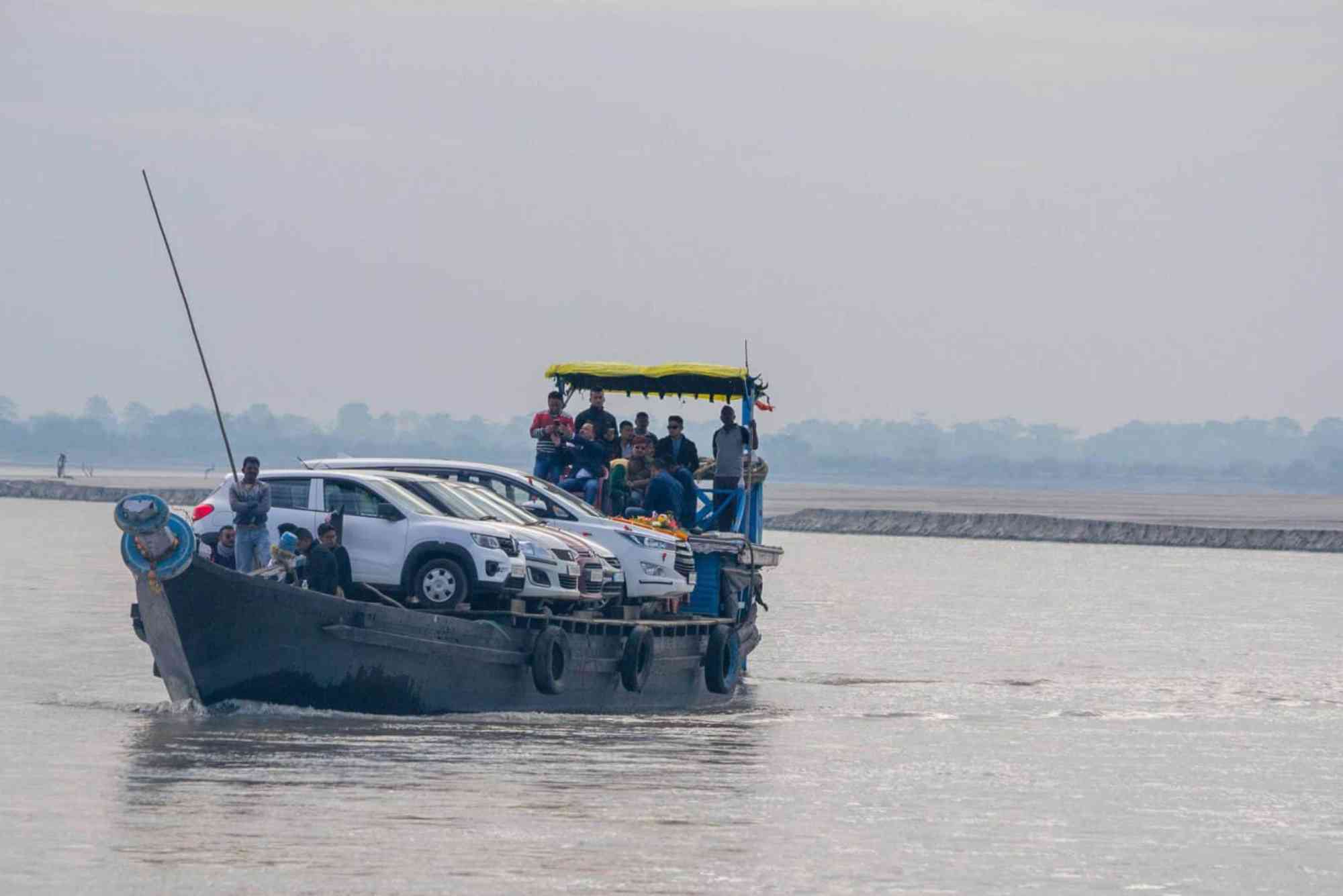Majuli Tourism Insights – India’s River Island Escape
Majuli, the world’s largest river island, sits gracefully on the Brahmaputra River in Assam. Known for its unmatched beauty, cultural heritage, and eco-friendly lifestyle, Majuli offers travelers a unique blend of scenic landscapes, vibrant traditions, and warm hospitality. Majuli tourism has been attracting nature lovers, photographers, and culture enthusiasts from around the globe, making it one of India’s most enchanting travel destinations.
Visiting Majuli feels like stepping into a world untouched by urban chaos. Here, you are surrounded by lush greenery, traditional stilt houses, winding river channels, and a slow-paced way of life that’s rare in today’s world. Whether you’re interested in birdwatching, exploring Assamese Vaishnavite culture, or simply relaxing in nature’s lap, Majuli offers a complete escape.
Best Time to Visit Majuli
The charm of Majuli changes with the seasons, but most travelers prefer visiting between October and March. During these months, the weather is pleasant, and the skies are clear, making it perfect for sightseeing and cultural exploration. The monsoon season, from June to September, transforms the island into a lush paradise, but heavy rains may cause flooding, which can limit travel. Summer months, from April to early June, are warm yet still enjoyable for those who want fewer crowds.
How to Reach Majuli
Reaching Majuli involves a beautiful journey that blends road and river travel. The nearest major city is Jorhat in Assam, well-connected by flights and trains. From Jorhat, travelers head to Neemati Ghat, where ferries operate across the Brahmaputra to Kamalabari Ghat in Majuli. The ferry ride itself is a scenic highlight, offering panoramic views of the river and distant landscapes. Once you arrive, local transport such as shared jeeps, auto-rickshaws, and bicycles make it easy to explore the island.
Top Attractions in Majuli
Satras – The Spiritual Heart of Majuli
Majuli is the cultural capital of Assam’s neo-Vaishnavite movement. The island is home to more than 20 Satras, which are traditional monasteries dedicated to preserving Assamese art, culture, and religion. Auniati Satra, Kamalabari Satra, and Dakhinpat Satra are among the most renowned, each offering unique performances, devotional music, and art exhibitions. Visitors often find these Satras deeply enriching, as they reflect centuries of spiritual and artistic tradition.
Mishing Tribal Villages
The indigenous Mishing tribe lives in stilt houses made of bamboo and thatch, built to withstand seasonal floods. A visit to these villages offers a glimpse into their daily life, traditional weaving techniques, and organic farming practices. Tourists can interact with locals, learn about their festivals, and even try homemade rice beer.
Majuli Mask-Making Tradition
One of Majuli’s most fascinating crafts is mask-making, especially at the Samaguri Satra. Here, artisans create elaborate masks used in Bhaona, a traditional theatrical performance depicting stories from Hindu mythology. The artistry and intricate detailing of these masks attract not only tourists but also scholars and art lovers.
Birdwatching and Natural Beauty
Majuli is a paradise for birdwatchers, especially during winter when migratory birds such as the Siberian crane, pelican, and whistling teal visit. Wetlands, paddy fields, and riverbanks become prime spots for photography and nature walks. The island’s serene environment allows travelers to enjoy nature without the distractions of city life.
Local Handicrafts and Weaving
The women of Majuli are skilled in weaving exquisite handloom products, including mekhela chadors, shawls, and gamusas. Using natural dyes and traditional patterns, their work is both sustainable and culturally significant. Purchasing these items supports local artisans and helps preserve their heritage.
Cultural Experiences in Majuli
Majuli tourism is not just about sightseeing; it’s also about immersing yourself in its vibrant culture. The Raas Leela festival, celebrated in November, is a highlight for many visitors. This festival depicts the life of Lord Krishna through music, dance, and drama, attracting participants and audiences from far and wide.
Traditional music and folk dances are integral to the island’s charm. Instruments like the khol (drum) and taal (cymbals) accompany devotional songs, creating an atmosphere of joy and togetherness. Staying with local families in homestays can make these experiences even more authentic.
Food and Cuisine of Majuli
Majuli’s cuisine reflects Assamese traditions with a focus on fresh, locally grown ingredients. Meals often feature rice, lentils, vegetables, fish, and fermented delicacies. The Mishing community’s smoked fish and pork dishes are particularly popular among visitors. Don’t miss trying pitha (rice cakes), poita bhaat (fermented rice), and apong (rice beer), which are staples during festivals.
Responsible Tourism in Majuli
Since Majuli is an ecologically fragile island, responsible travel is essential. Visitors are encouraged to avoid plastic waste, respect local customs, and support sustainable businesses. Homestays, eco-resorts, and community-run tours help channel tourism revenue directly into preserving the island’s culture and environment. Cycling or walking instead of using motorized vehicles is another way to minimize your ecological footprint.
Where to Stay in Majuli
Accommodation in Majuli ranges from basic guesthouses to comfortable eco-lodges. Many visitors prefer homestays for a closer connection with local life. These stays often include homemade meals, cultural storytelling, and guidance on exploring the island. Popular areas for staying include Garamur and Kamalabari, which are close to major attractions and transport facilities.
Travel Tips for Majuli
- Carry cash, as ATMs are limited and not always functional.
- Pack light but include essentials like insect repellent and sunscreen.
- Dress modestly when visiting Satras to show respect for local traditions.
- Check ferry timings in advance, as they may vary depending on the season and river conditions.
- Learn a few Assamese phrases to enhance your interaction with locals.
Why Majuli Should Be on Your Travel List
Majuli is not just a destination; it is an experience that blends nature, tradition, and warmth. Its serene environment, rich cultural heritage, and friendly people make it a must-visit for anyone seeking an authentic Indian getaway. From exploring centuries-old Satras to watching sunsets over the Brahmaputra, Majuli offers moments you’ll carry for a lifetime.
FAQs
What is Majuli famous for?
Majuli is famous for being the world’s largest river island and a hub of Assamese neo-Vaishnavite culture, known for its Satras, art, and natural beauty.
How many days are enough to visit Majuli?
Two to three days are ideal for exploring Majuli’s major attractions, cultural sites, and villages without feeling rushed.
Is there a direct road to Majuli?
No, you must take a ferry from Neemati Ghat in Jorhat to reach Majuli.
Can I visit Majuli during the monsoon?
Yes, but be prepared for possible flooding and ferry delays. The scenery is lush, but travel can be challenging.
Are there hotels in Majuli?
Yes, but most accommodations are small guesthouses, eco-lodges, or homestays offering basic to moderate amenities.




